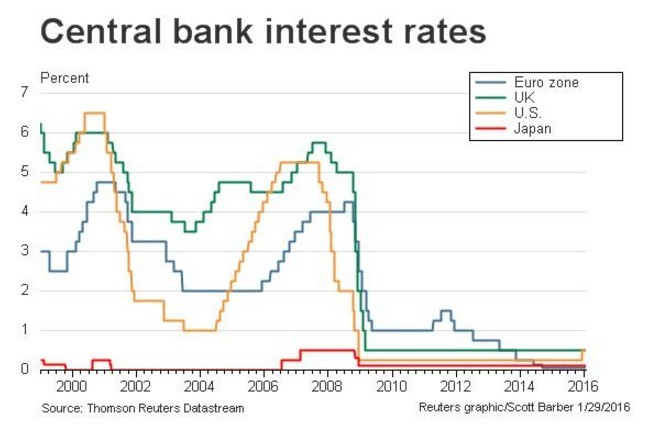
It’s generally recommended that business owners, including those in e-commerce, understand the basics of bookkeeping and the difference between bookkeeping and accounting. Managing your own accounting as a retail business owner is possible but can be quite time-consuming. Automated accounting software like Synder is one option that allows you to maintain control over your accounting while getting the support you need to focus on the retail business.
Orders from marketplaces, offline stores, and online ones can all be processed by QuickBooks Online through Primaseller. This saves you considerable time in integrating your inventory with accounting. But today, thanks to the advent of integrations and products for every purpose, you can automate the updating of all your invoices, inventory, and purchase Retail accounting orders across channels. Use an inventory management system that is integrated with accounting software. Trade discounts are those discounts you provide at the time of purchase – like when a customer buys goods in bulk or to keep your loyal customers coming back. You can ignore these for accounting purposes and eliminate them from your accounting records.
In our example, the cost of goods sold at retail is Sales of $5,300. Take note that you only exclude markdowns when computing the cost-to-retail ratio. This markup is reflected in our beginning inventory and net purchases. Find help articles, video tutorials, and connect with other businesses in our online community. 130,000 ProAdvisors—certified QuickBooks accounting experts—ready to help you set up and run QuickBooks. Yes, QuickBooks Desktop Enterprise can help with advanced inventory features like bin location tracking, bar code scanning, and FIFO inventory.
Subtract the answers from steps 2 and 3 to compute inventory at retail price. Actual COGS is very difficult to track and calculate, whereas sales is easy. This is the primary reason companies use the Retail method to estimate COGS. The cost should be the amount recorded in the books, while the retail price refers to the amount you generally will charge your customers for the goods.
If you use the FIFO costing method, you take the cost of the first order you purchased, compare it to the revenue you’ve had come in and assign that revenue to the cost of goods sold. Cost accounting is useful for making internal business decisions that improve a company’s production process, especially for larger businesses with more expenses. In fact, calling it retail accounting makes it sound as if there is a special discipline of accounting, especially for retailers. While retail accounting isn’t a separate discipline of accounting, the difference is that there’s a greater focus on inventory, which we’ll explain in this guide. There are five ways in which a business can choose to calculate the cost or value of inventory. There is no “wrong” method to use to value your inventory, but there is a “best” way for your business.
Stay on top of purchase orders
Each type of fiber costs a different amount, and certain knitting needles are more expensive than others. However, you have chosen to use a keystone markup strategy, so you know you have a 50% markup on all items, regardless of what they are. The weighted average method of inventory costing is often used when inventory is not perishable but stock can still easily be rotated or intermingled. Retail businesses have unique challenges, not the least of which is business accounting — especially for inventory.
Truthfully, both retail stores and other types of businesses need to keep clear records of their financial operations. Other companies like a law office don’t have to worry about keeping track of products or stock levels. Whether you hire freelancers or full-time employees, your retail business won’t be a one-person show for very long. If you hire employees, you need to figure out their payment schedule and how much of their monthly salary you need to deduct for tax purposes. Likewise, you also need a way to calculate their allowances, overtime pay and any other deductions that you need to make for them.
However, you need to account for them differently based on whether they are trade discounts or cash discounts. In addition, collaborating with third-party fulfillment services creates nexus in several states – the ones where your inventory is being stored. In such cases too, you need to register for a sales tax permit in all nexus states.
Choosing an Accounting Software for Your Retail Business
Sign up to receive more well-researched small business articles and topics in your inbox, personalized for you. Advanced Pricingis included in the Platinum and Diamond subscriptions only. Advanced Pricing is included in the Platinum and Diamond subscriptions only.
- IFRS also uses the net realizable value as a measure of inventory value, but the definition is different from GAAP.
- Create a professional invoice that reflects the brand of your retail business.
- We’ll be able to advise you on all aspects of bookkeeping and collaborate with you via QuickBooks.
- Right Networks performs backups of all Hosted data on a nightly basis and retains the back-ups for a rolling 90-day period in a protected offsite facility as an additional level of protection.
- This method allows you to keep track of the items you sell as changes occur with a fully integrated point-of-sale (POS) system.
Simplify your accounting tasks with custom invoices, payments tracking and client management. The retail method of accounting is a popular valuation strategy for retail stores primarily because of its simplicity. If you use a flat markup rate across all products, then you can calculate your ending inventory cost without counting it.
Accounting For Inter-State Tax (In The US)
More on this in a bit, but first it’s important to understand the importance of accounting for the cost of inventory in your retail business. However, being an e-commerce owner requires basic accountancy and bookkeeping skills to ensure your cash flow and business remain healthy. The final step in the accounting cycle for a retail store is balancing the books.
Apart from the retail method, there are three primary cost accounting methods to value inventory – first in first out, last in first out and weighted average cost. The Internal Revenue Service allows retail businesses to use either the direct cost method or the retail inventory method for tax-reporting purposes. Based on the method selected, there can be significant differences in valuation. The previous four inventory costing methods value inventory based on the cost to acquire the inventory. The retail method is different — it values inventory based on the retail price of the inventory, reduced by the markup percentage. This allows the retailer to quickly arrive at an approximate value of inventory, without having to take a physical count or match cost to items still on hand.
Retail Method vs Normal Periodic Method
As you move through the retail accounting cycle, there are three financial statements you’ll want to look at — income statement, balance sheet, and cash flow statement. These financial statements provide crucial information that will help you make important business decisions. Now, if maths and finances aren’t necessarily your forte, you need retail accounting software for your small business. Depending on the type of inventory you sell, you may be able to use the simpler retail method to calculate the cost of goods sold and the cost of your ending inventory. Take this number and subtract the sales total multiplied by the percentage, and subtract it from the cost of goods sold to get the ending inventory total.
The retail experience is constantly evolving with cashier-less stores, autonomous delivery systems and contactless point of sale systems. As brick and mortar shops compete with online storefronts, it is important to remain up to date with the latest technology advancements for the best customer experience. Withum provides proactive solutions to help retail businesses remain ahead of their competition. After a period of rapid, creative pivots and changing business models, many retail companies are left with open-ended questions in unchartered waters. Whether you are looking for a franchise tax expert, retail accounting services or e-commerce auditors, our business advisors can assist.
Now, we’re going to assume that you’re a very proactive individual, which is why you’re looking at investing in accounting software. Great, because in this article we’re going to look at why you should use QuickBooks online if you have an online retail business. First-in, first-out is a method used to count ending inventory costs that focus on cost flow.
Doing so can save you time at the end of the year when you’re preparing tax statements, and it helps you keep track of your revenue and profits. For example, if you buy collector’s sets of chess for $75 each and sell them for $100 each, the cost-to-retail percentage is 75%. To keep track of your revenue and profit, you must monitor the cost of the goods you sell and the dollar amount of the inventory you have left.
Having a thorough understanding and managing your books well makes running your business much easier. So we understand why you’re probably looking for an accountancy solution like e-commerce for QuickBooks. If you want to remain on a par with (or preferably ahead of) your competition, proper bookkeeping and management of your finances are key to the growth and success of your business. Keeping accurate inventory records will also help save time while preparing your tax statements.

Essentially, every time you make a sale online or in your store, the invoice is sent into accounting software that immediately updates all book values. Primaseller is integrated with QuickBooks Online in order to make this process seamless, no matter where you sell. It works best for products which cost price does not change in the same accounting year. For example, for a given financial year, you buy that product at $3 per unit at all times.
Accounting Software Market Share, Size and Forecast to 2030 … – Digital Journal
Accounting Software Market Share, Size and Forecast to 2030 ….
Posted: Mon, 21 Aug 2023 09:15:38 GMT [source]
Moreover, it helps e-commerce business owners at all stages in developing their bookkeeping skills. Besides being able to set up automatic financial reports and invoices, you can also generate your sales tax report really simply. By integrating stock management and accounting systems, you’ll be able to more accurately track data like how much money each product is bringing in and how often each piece is being bought. This means you’ll be better equipped to put together cash flow forecasts and make more informed decisions about your business.
